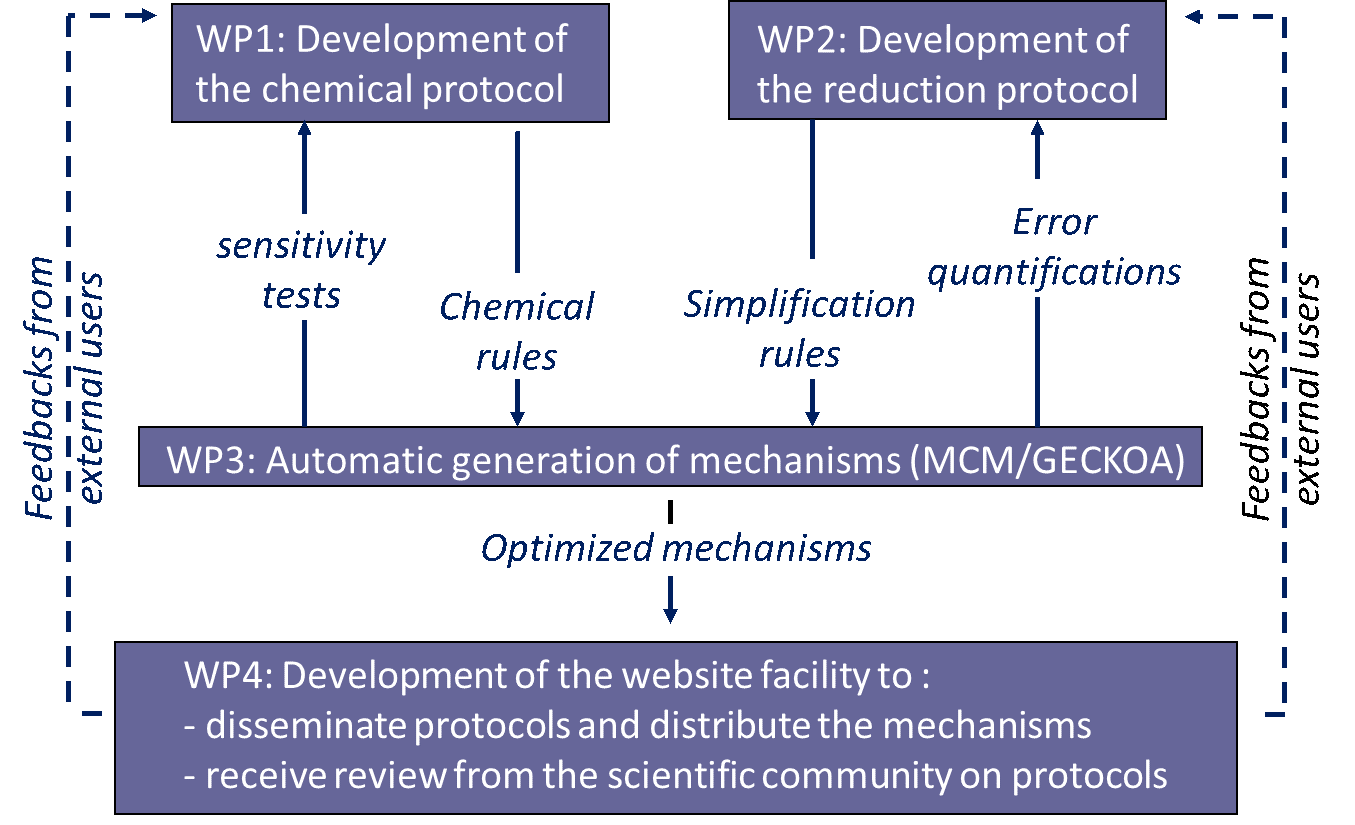Magnify
MAGNIFY : Mechanisms for Atmospheric chemistry, Generation, Interpretation and FidelitY
Policies for air quality, climate and ecosystem services are made with the aid of predictive numerical models. These models describe the main processes driving the evolution of the species for various space and time scales. The description of the chemical transformations occurring in the atmosphere is one common feature of these models. Distinct “chemical mechanisms” have been designed with varied degree of complexity matching particular focuses and various computational constraints. Benchmark mechanisms, based on our fundamental chemical understanding of the atmosphere, are powerful tools to assess the strengths and weaknesses of these simplified mechanisms and provide a crucial link between policy models and the fundamental state-of-science laboratory/theoretical studies.
The regular needs to revise mechanisms to include new data and/or understanding of the atmospheric oxidation route is strongly inhibited by the manual construction used so far by mechanism developers. The GECKO-A software (Generator for Explicit Chemistry and Kinetics of Organics in the Atmosphere) has been developed to overcome these difficulties. GECKO-A is a unique tool for the automatic writing of chemical mechanism of organic species. This automation allows to develop the oxidation mechanism of new species in a very fast way and to easily update the mechanism. A major innovation within this project is the linkage between the Master Chemical Mechanism (MCM) and GECKO-A, two world leading tools, to design a new “standard” mechanism based on (1) a construction protocol entirely revised and (2) automated methods to generate and maintain the mechanism up to date, to keep pace with the constantly evolving experimental database. The project is jointly run by one group of the MCM team (University of York, United Kingdom) and one group of the GECKO-A team (LISA, France).
The project is structured around 4 main work packages (WP) described in figure 1. The first WP is devoted to the development of a protocol, i.e. the set of rules and data that drives the construction of the oxidation mechanism of each hydrocarbon. The protocol will be diffused on a website with the potential for the external scientific community to contribute to its regular updating. WP2 deals with the development of a mechanism reduction protocol. Indeed, insertion of the protocol developed in WP1 in the GECKO-A tool will lead to chemical mechanisms involving millions of elementary reactions. Large reductions are therefore required, down to a size useful for the scientific community. The third work package is devoted to automatic generation of the MCM/GECKOA mechanism, based on the protocols developed in WP1 and WP2. The last work package concerns the mechanism dissemination and its constant revision by the scientific community via a website facility designed for that purpose.

Figure 1: Organization of the work packages in the Magnify project.
Contact: B. Aumont
Support financier: ANR-14-CE01-001
Partners : University of York, WACL
Publications:
- Jenkin, M. E., Valorso, R., Aumont, B., and Rickard, A. R.: Estimation of rate coefficients and branching ratios for reactions of organic peroxy radicals for use in automated mechanism construction, Atmos. Chem. Phys. Discuss., https://doi.org/10.5194/acp-2019-44, in review, 2019.
- Jenkin, M. E., Valorso, R., Aumont, B., Rickard, A. R., and Wallington, T. J.: Estimation of rate coefficients and branching ratios for gas-phase reactions of OH with aromatic organic compounds for use in automated mechanism construction, Atmos. Chem. Phys., 18, 9329-9349, https://doi.org/10.5194/acp-18-9329-2018, 2018.
- Jenkin, M. E., Valorso, R., Aumont, B., Rickard, A. R., and Wallington, T. J.: Estimation of rate coefficients and branching ratios for gas-phase reactions of OH with aliphatic organic compounds for use in automated mechanism construction, Atmos. Chem. Phys., 18, 9297-9328, https://doi.org/10.5194/acp-18-9297-2018, 2018.
- La, Y. S., Camredon, M., Ziemann, P. J., Valorso, R., Matsunaga, A., Lannuque, V., Lee-Taylor, J., Hodzic, A., Madronich, S., and Aumont, B.: Impact of chamber wall loss of gaseous organic compounds on secondary organic aerosol formation: explicit modeling of SOA formation from alkane and alkene oxidation, Atmos. Chem. Phys., 16, 1417-1431, https://doi.org/10.5194/acp-16-1417-2016, 2016.


